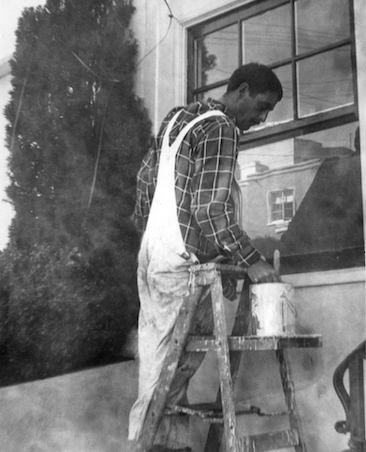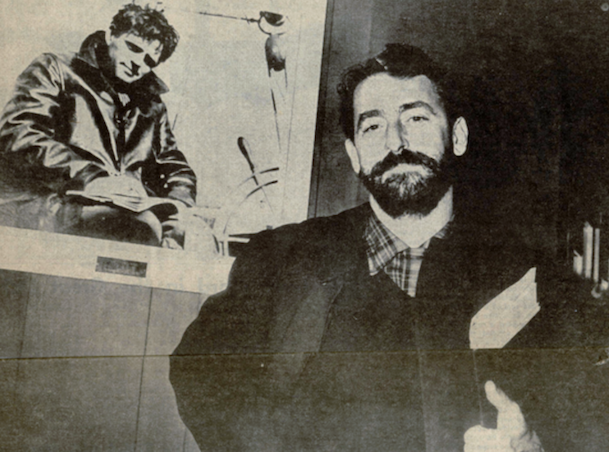Dow Wilson: Difference between revisions
EvaKnowles (talk | contribs) (part of Molly labor series) |
(added category) |
||
| Line 33: | Line 33: | ||
[[category:Labor]] [[category:Bernal Heights]] [[category:1960s]] | [[category:Labor]] [[category:Bernal Heights]] [[category:1960s]] [[category:Famous characters]] | ||
Latest revision as of 14:05, 5 September 2024
Historical Essay
by Molly Martin, Gail Sansbury, Elaine Elison, and the Bernal History Project
Dow Wilson, 1924-1966.
| Bernal Heights has been a center of labor activism for over a century; many prominent labor organizers can be traced there. This profile is part of a series put together by the Bernal History Project for Labor Fest in 2008 that tells the stories of six “reds” from Bernal Heights: Miriam Dinkin Johnson, Eugene Paton, Phiz Mezey, Dow Wilson, Bill Sorro, and Giuliana Milanese. |
TIME Magazine said Dow Wilson was never a man to be ignored. A swashbuckling, Shakespeare-spouting romantic, he was also a volatile, foulmouthed labor leader who spent years fighting chicanery in his union's higher echelons. As the secretary of the Brotherhood of Painters, Decorators and Paperhangers’ San Francisco Local 4—biggest in the U.S.—he commanded the unwavering allegiance of nearly all 2,600 local members. A one-time seaman, Dow was fighting for more regional autonomy, an end to sweetheart contracts and the ousting of corrupt union officials on a local and international level.
Dow Wilson standing in front of a picture of the writer and socialist Jack London.
Dow Wilson planned to run for International VP of the Painters’ Union in 1968. Then on Tuesday April 5, 1966, at one a.m. near the Redstone Labor Temple building on 16th Street at South Van Ness, Dow Wilson was assassinated with a 12-gauge shotgun.
On Friday May 6, another painters’ local financial secretary was shot dead with a shotgun. Lloyd Green, secretary of Hayward Local 1178, like Wilson, had been a left-leaning seaman before joining the painters. Both had headed reform movements and both had criticized the Painters’ International leadership and policies.
Using undercover operatives and a wire, the SFPD broke the case and made several arrests. Then the administrator of the Painters’ $500,000 welfare fund, having admitted to police that he embezzled $60,000, shot himself. Four people were tried in August 1966. One confessed. One was convicted. Defense Attorney was Melvin Belli. Ben Rasnick, the East Bay District Council secretary, a bitter enemy of Dow Wilson, was eventually convicted for the slaying of Lloyd Green and sentenced to life in prison.
The Painter’s International was not brought into the trials and whether the murders were ordered from higher up remains a mystery. In November 1965, they published the first issue of their own tabloid, the Bay Area Painters News, to campaign for democratization of the council. The publication became the rallying force for reform forces in the Bay Area.
Late in May 1966 the case cracked open when Norman Call and Max Ward, two employer insurance fund trustees, were indicted in state court for the murders, along with three fund administrative employees, revealing a conspiracy to defraud the funds of hundreds of thousands of dollars. Two days later Sture Youngren, the fund administrator, committed suicide after confessing to stealing $60,000. In September 1966 Ward and Call were convicted of murder; the charge against the other three was reduced to embezzlement.
Read more about Dow Wilson and his assassination here.
Read about other Bernal Heights labor activists here. Thanks to the SF Labor Archives and Research Center, a rich source of information about union movements and working class life in the Bay Area, and the families of our subjects.


